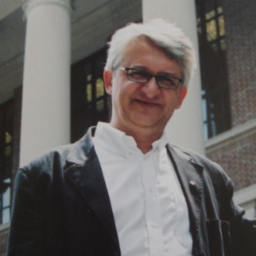11.00 Borders in Heritage: An Introduction
My Session Status
This paper will provide the conceptual introduction to the panel, drawing on results and reflections stemming from a six-year project on “Frontières du Patrimoine: Circulation des savoirs, des objets et oeuvres d’art,” directed by Nabila Oulebsir, Dominque Poulot, Astrid Swenson and Laurier Turgeon, funded by the Centre interdisciplinaire d’études et de recherches sur l’Allemagne (CIERA) and organized by the Centre Georg Simmel (UMR 8131, CNRS-EHESS), in partnership with Université de Poitiers (Département d’Histoire de l’art et Archéologie / CRIHAM), l’Université Paris I Panthéon-Sorbonne (UFR03 Histoire de l’art et Archéologie, HiCSA), Brunel University London (Department of Politics, History and Law) and the Université Laval (Chaire de recherche du Canada en patrimoine ethnologique / LEEM, Québec).
Despite the growth of international connections in heritage studies, national, linguistic and disciplinary borders continue to structure scholarly and practical approaches to heritage. The aim of the project, which will be further pursued by the panel, has been to conceptualize and to overcome these boundaries in historical and contemporary perspective. In our paper, we will firstly address which borders limit our understanding of heritage today. What are the roles of linguistic, disciplinary, religious and national borders? Which methodologies are best suited to overcome them? Or is the critical turn in heritage studies better served by not overcoming differences, but simply making them more transparent: is it actually the multiplicity of approaches created by borders that offers a heuristic tool in itself?
The second part will discuss the fluidity of borders in a longer trajectory, by presenting the history of the transfer of ideas, people and objects across national and cultural borders historically in different contexts. We will outline factors that helped to increase flow at particular moments, how these transfers lastingly changed and transformed ideas about heritage, and which areas would offer fruitful terrain for further research.
Finally, while the growing transnational research has helped us over the last years to better understand the cross-border dimension of heritage, this has sometimes led to overlooking the physical and mental barriers to flows. Therefore, we suggest looking also at the solidity of borders in different geographical, linguistic and historical contexts. How have physical borders, and the performativity of the border in conflict and peace, been affecting ideas of heritage not only in borderlands but in the centre of nations and transnationally? Is each border unique, or can commonalities be discerned in different context and times? We will conclude that more attention to borders as an object of study and as a heuristic tool can provide a better understanding of the role of cultural particularization versus globalization and other transnational processes relating to heritage.
This introduction is co-authored with Dominique Poulot, Laurier Turgeon and Nabila Oulebsir.


